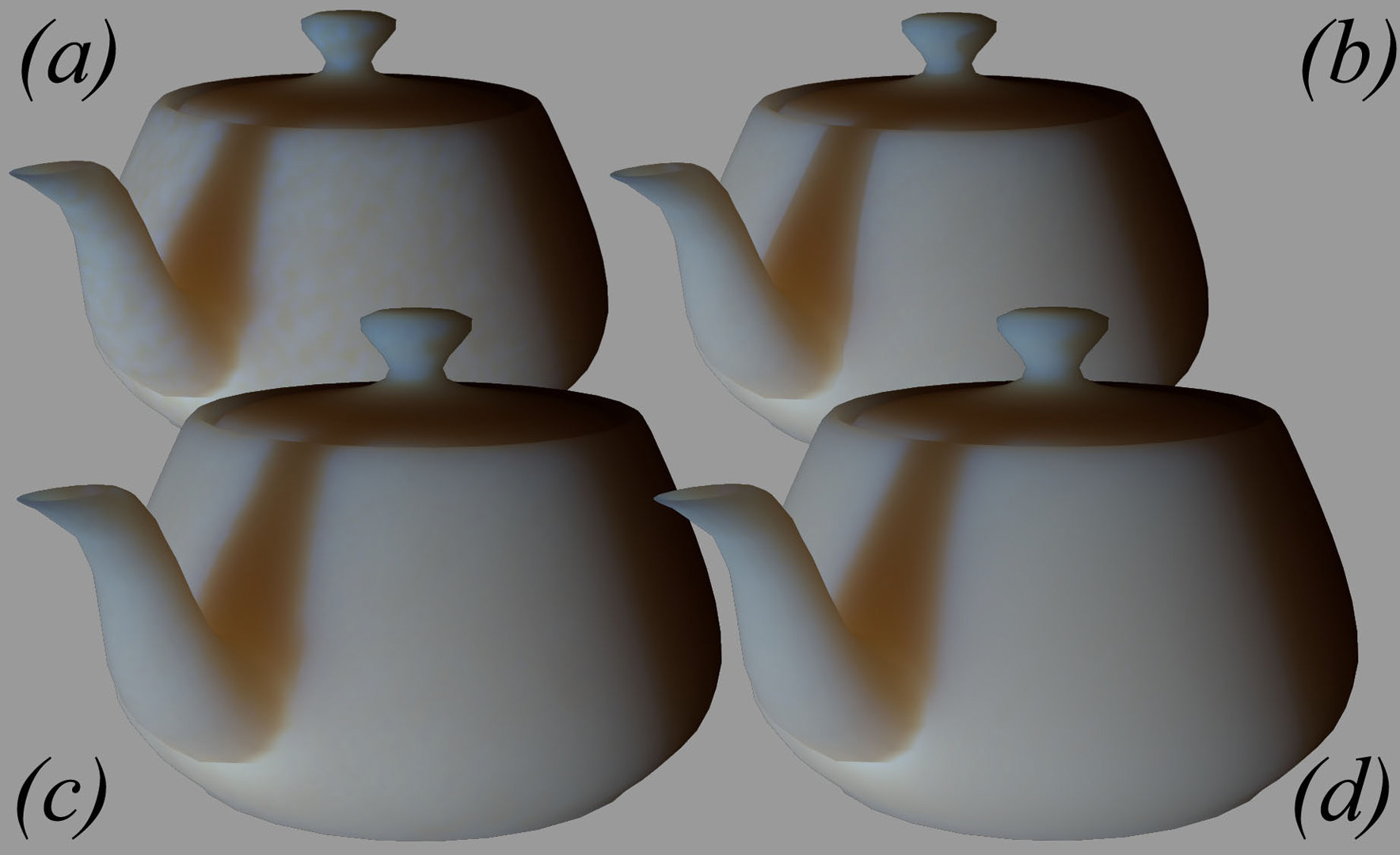“Smoother subsurface scattering”
Conference:
Title:
- Smoother subsurface scattering
Session/Category Title: Painterly Lighting
Presenter(s)/Author(s):
Abstract:
The irradiance-cached dipole diffusion approximation proposed by [Jensen and Buhler 2002] is a practical tool for capturing the subsurface scattering of many common materials in the context of film-quality rendering. One drawback of this model is the high irradiance point density it requires to attenuate sampling noise at low mean free paths, which can be expensive in terms of time and memory. A clever smoothing technique by [Langlands and Mertens 2007] filters out this sampling noise by blending the noisy irradiance-cache-derived diffusion approximation with a noise-free precomputed diffusion integral that is weighted by local irradiance. But this smoothing leaves an artifact at low sample densities, as shown in Figure 1: abrupt changes in irradiance, e.g. across shadow edges, tend to produce hard edges in the rendered image, irrespective of the mean free path. Moreover, increasing the smoothing radius hardens rather than softens these edges.
References:
1. Jensen, H. W., and Buhler, J. 2002. A rapid hierarchical rendering technique for translucent materials. In SIGGRAPH’ 02 Proceedings, ACM, 576–581.
2. Langlands, A., and Mertens, T. 2007. Noise-free bssrdf rendering on the cheap. In SIGGRAPH’ 07 posters, ACM, 182.





